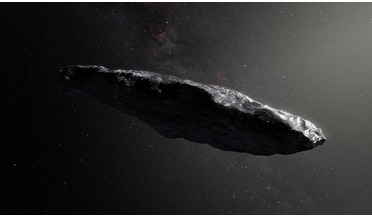 21 November 2017
First interstellar asteroid looks nothing like expected
21 November 2017
First interstellar asteroid looks nothing like expected
... as possible about the object before it disappeared off again. One telescope to get a good look at `Oumuamua – an Hawaiian name meaning ‘scout’ – was ESO’s Very Large Telescope (VLT). Observations show that `Oumuamua varies dramatically in brightness...
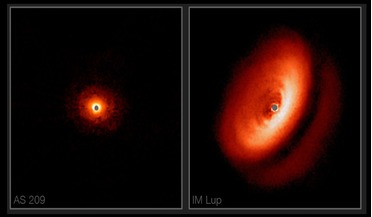 11 April 2018
Revealing planet formation processes with SPHERE
11 April 2018
Revealing planet formation processes with SPHERE
...is SPHERE and recent images show that like the planets themselves, no one disc is alike. Installed on ESO’s Very Large Telescope (VLT), SPHERE or the Spectro-Polarimetric High-contrast Exoplanet REsearch instrument is mainly tasked with detecting and...
 09 May 2018
First confirmed carbon-rich asteroid found in Kuiper Belt
09 May 2018
First confirmed carbon-rich asteroid found in Kuiper Belt
... confirmed so far away from the Sun. The discovery of 2004 EW95, made by an international team of astronomers using ESO’s Very Large Telescope, helps strengthen theories about the dynamical evolution of the Solar System that describes how the planets...
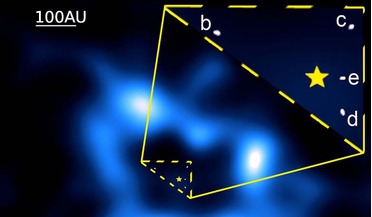 18 May 2016
Multi-planet system hints at extra planet in its cometary belt
18 May 2016
Multi-planet system hints at extra planet in its cometary belt
... either migrated or another undiscovered planet is present. The zoom-in portion of the image, taken with ESO's Very Large Telescope, shows the location of the known planets in this system in relation to a graphical representation of the central...
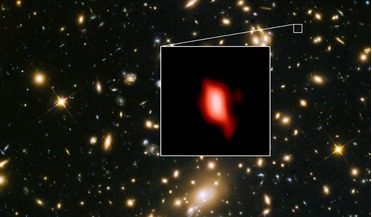 16 May 2018
Astronomers find stars forming just 250 million years after Big Bang
16 May 2018
Astronomers find stars forming just 250 million years after Big Bang
.... This discovery also represents the most distant galaxy ever observed by the observatories that studied it; ESO’s Very Large Telescope (VLT) and the Atacama Large Millimeter/submillimeter Array (ALMA) – an array that has already set the record for...
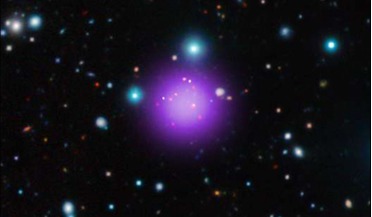 31 August 2016
Record-breaking galaxy cluster discovered
31 August 2016
Record-breaking galaxy cluster discovered
... Array (ALMA), the Institut de Radioastronomie Millimetrique Northern Extended Millimeter Array (IRAM NOEMA), and ESO's Very Large Telescope. Speaking about the importance of this record-breaking discovery, study co-author Alexis Finoguenov of the...